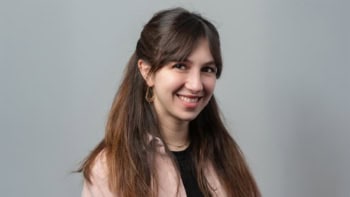
Inspiring the next generation of scientists is an important and challenging task, and physics teachers work hard to help students develop a genuine understanding of core physical concepts. Students can sometimes find it difficult to grasp some of the abstract ideas underpinning the study of electricity, so it was fitting that effective methods for teaching electricity was the focus for a recent workshop for nine physics teachers from Egypt and six from the UK.
The workshop was organized in a co-operation between the Institute of Physics (which publishes Physics World), the Egyptian Ministry of Education and Technical Education, and the Egyptian Knowledge Bank – one of the world’s largest digital libraries that since 2016 has been free to access by educators, researchers, students, and Egypt’s general population. The event, held on 13 March at the Institute’s London headquarters, was designed to allow the teachers to exchange ideas and share best practice.
Particular focus placed on using demonstrations and modelling techniques to foster a deeper understanding of the physical processes at play. “In one demonstration all participants formed a circle and held hands to light up an LED at the top of the circle,” says Linsey Clark, International Relations Manager at the Institute of Physics. “Everyone was surprised to see the LEDs light up when the circle was complete, and requested information about where to find the equipment to use in their own classrooms.”
The teachers also explored the rope-loop model, in which participants holding a loop of rope take the role of different components within a circuit. Different configurations can be made to demonstrate concepts such as series and parallel circuits, offering a versatile technique that can help explain electricity to school children at different stages of their education.
The Egyptian delegation, led by Egypt’s minister for education, Dr Tarek Shawki, was keen to explore more practical approaches for teaching physics in the classroom. They said that science education in Egypt is often dominated by note-taking and rote learning, with few opportunities for creative problem solving or critical thinking. Students gain little appreciation of how to think and study like scientists – which is a major problem for a country that believes that science and innovation holds the key to its future economic prosperity.
As a result, Shawki is leading sweeping reforms of Egypt’s education system, with the government investing heavily in new curricula, improved learning methods, and more progressive assessment criteria. As a scientist himself – with an extensive academic record that includes 13 years studying theoretical and applied mechanics at the University of Illinois at Urbana-Champaign – the minister is well aware that science teaching in Egyptian schools needs particular attention, and in pre-workshop discussions he talked about ambitious plans to introduce more interactive techniques that build understanding as well as knowledge.
“Teachers from both nations enjoyed the sessions and gained some useful techniques to use in the classroom,” adds Clark. “The Egyptian teachers who attended could certainly use the examples from the workshop to demonstrate how physics can be taught in a more practical way.”



